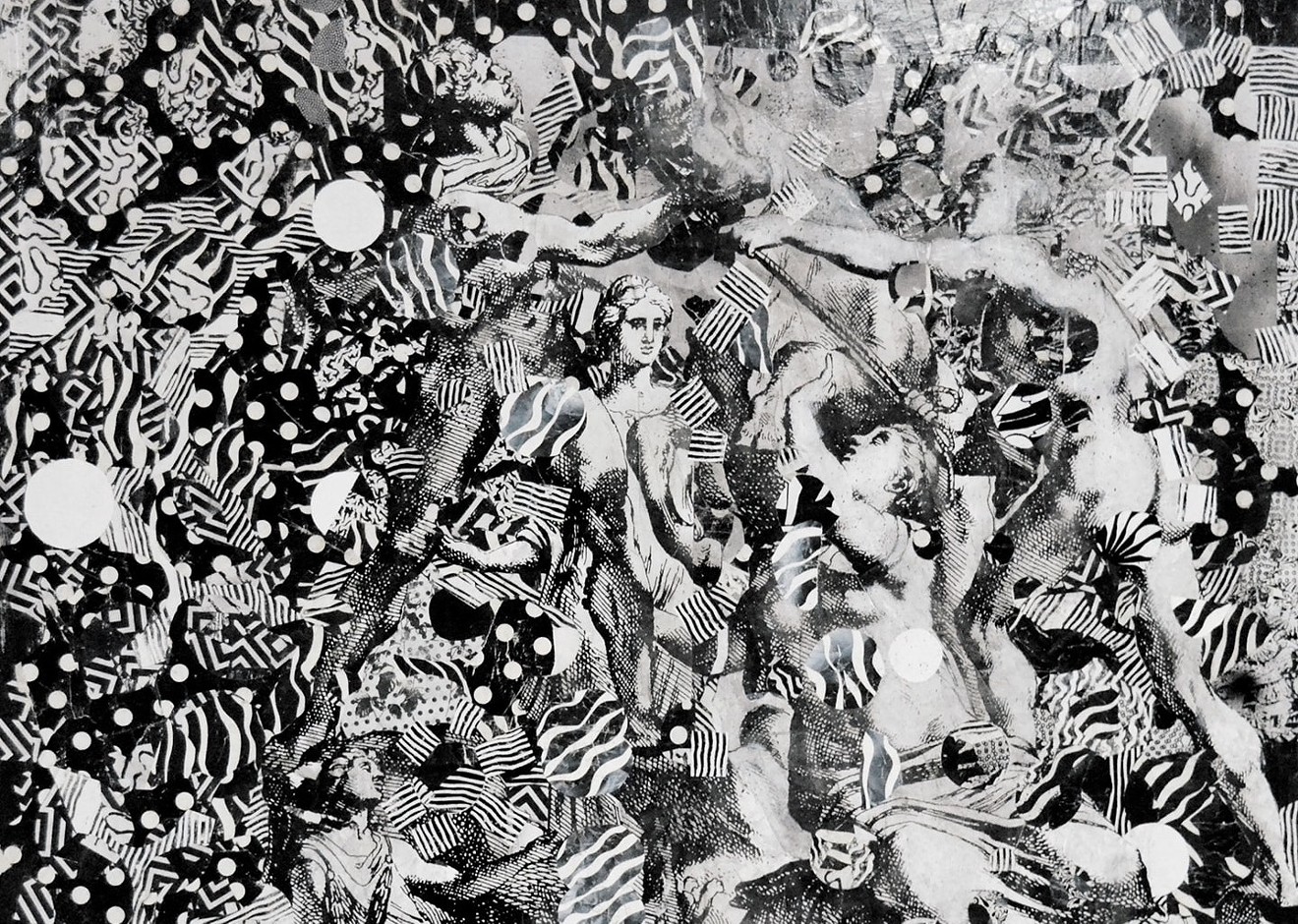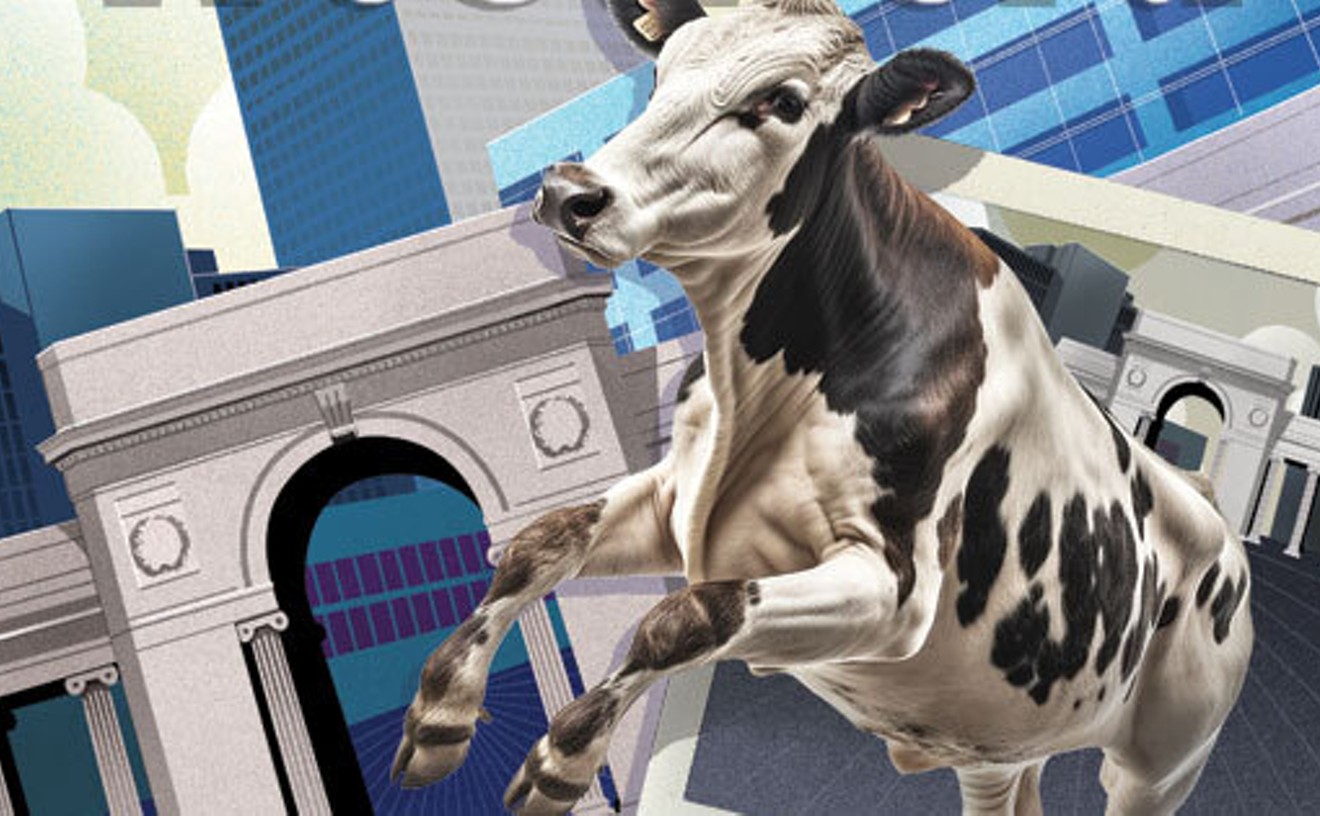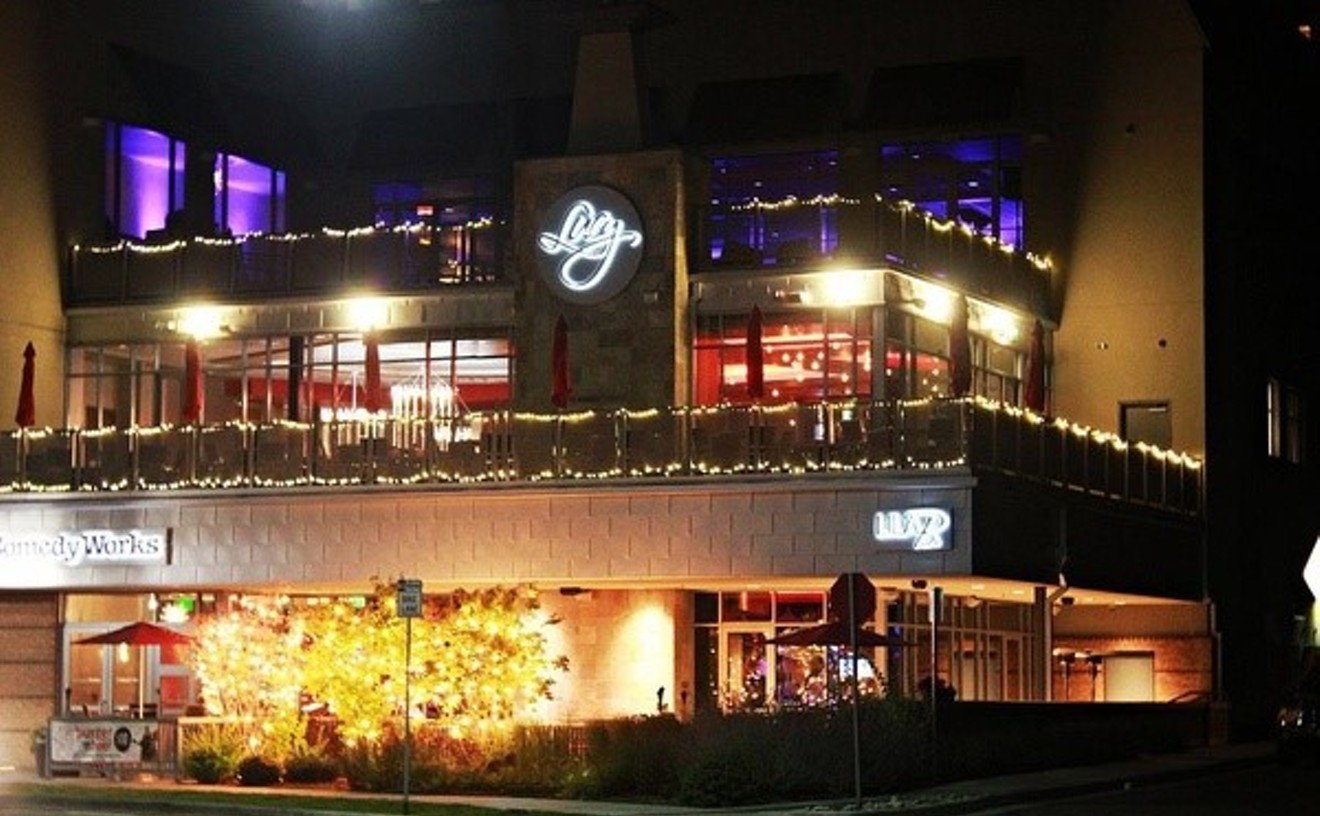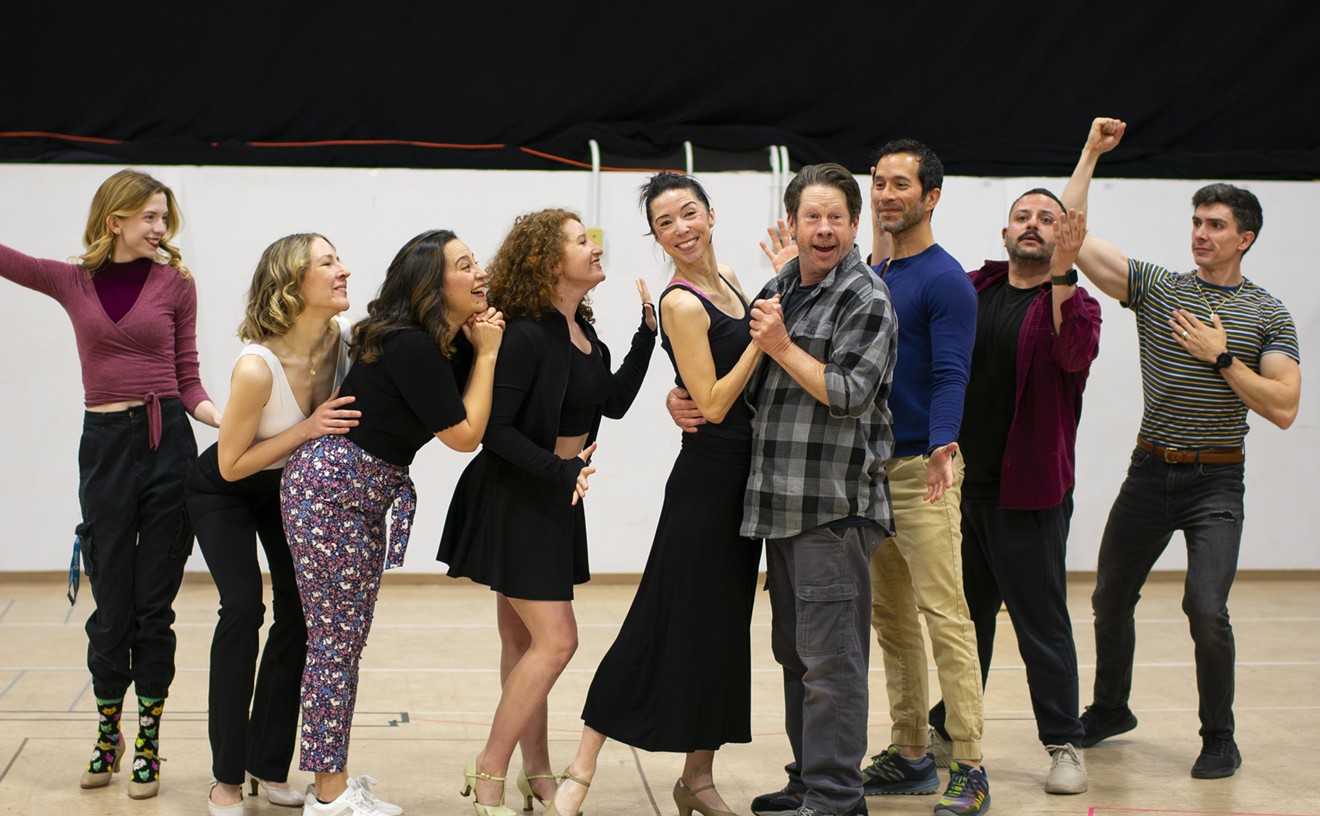Peter Yumi is one of twenty artists participating in one of those shows, Paper.Works, a group survey examining paper’s sheer adaptability as a medium. His monumental work, "The Mark of the Beast SOS (Society of the Spectacle)," made up of two columns of four five-square-foot wood panels and one central rectangular panel, lines the main gallery entryway like a modernized Renaissance fresco, driven by darkness in stark black and white.
Although he spent weeks in his studio laboring over the individual panels, sometimes with help from friends, Yumi says he first saw the work as it was intended to look only after its installation at the Arvada Center. Ecstatic with the result, he adds that "Mark of the Beast" in its intended form brings resolution — or at least a continuing conversation — to the work’s arc of creation, a process of cooperation and real-time connection in a world undone by the Internet. Inspired by the underground unity of people dissatisfied by current politics, Yumi channeled his own conflicted persona into a statement intended to bring disparate protesters together.
“Different people helped me build things or assisted in linocut- and screen-printing imagery,” Yumi explains. “I worked sixteen hours a day nonstop on the weekends. The process was intense, and at same time cathartic for me, because during the whole election thing, I got really upset about conversations I was having online about it. I decided to take a step back and put that energy into my work, and try to use that to answer questions that came up.”
Yumi had originally started out on a different track in realizing "Mark of the Beast," with a visual focus on the Colorado labor-rights movement of the ’30s and ’40s. But then he read Guy Debord’s Situationalist treatise, The Society of the Spectacle, which led Yumi in a new direction.
“I think the book has become increasingly relevant for our times,” he continues. “Debord talks about how images have become a means of communication. We are more dependent on the Internet now, and we do sometimes communicate there just through images. When people scan through Facebook feeds, they’re often looking as the pictures go by; they see just the headlines and have no idea if they are fake news or not, and that shortens their critical thinking. We get stuck in a loop of interacting with people who believe the same things we do, so there’s no learning from other people’s perspectives.”
Yumi’s interest in ’30s and ’40s grassroots labor movements was partly inspired by that era’s powerful socialist woodblock-print posters. But with new intentions, he turned instead to a different track of imagery, some of it, like the myth of Icarus, evocative of “soaring to heights with tech, causing a downfall for humanity.” Then Yumi began layering printed and collaged imagery between coats of clear resin on a chaotic background.

Peter Yumi discusses "The Mark of the Beast SOS (Society of the Spectacle)" at the Arvada Center.
Melanie Mayner, Arvada Center
Ultimately, Yumi hopes people continue to ask those questions and overcome split-moment biases to stop and listen to one another: “One thing that happened while I was working on "Mark of the Beast" — I started inviting people to my studio to hang out. I'd ask them questions about their political beliefs and personal lives. It made me happy to spend time with people I normally only talk to online. I'm obsessed with working, so I decided that if we wanted to talk, they'd have to come hang out at my studio.
“In this day and age, we can put down the computer, the smartphone, the tablet, and we can have coffee, talk to somebody and stop being so reactive,” he says. “I’m not a Luddite about using the technology, but we have to learn to use it responsibly. It’s best to ask questions rather than making assumptions about things. You can’t read something from a random website and assume that it’s true, and the person you argue about it with could be your neighbor or your friend, and all of a sudden they become a monster to you. But if you can develop your awareness and practice responsible Internet behavior by learning how to check resources and avoid online conflicts, they come into real life.
“That’s probably the most positive thing I’ve taken away from this process,” Yumi concludes. “I developed a different understanding about our place on the Internet, and how we interact. The main thing is, if we start asking questions more and continue to ask questions, we become more critically engaged in that process. I think it's healthy.”
Paper.Works, along with companion exhibits Stan Meyer: Poetic Presence and Paper on Paper: The Art of Chine-Collé, opens to the public with a reception from 6 to 9 p.m. on Thursday, June 1, and runs through August 20 at the Arvada Center. Learn more about Peter Yumi and his work online.














